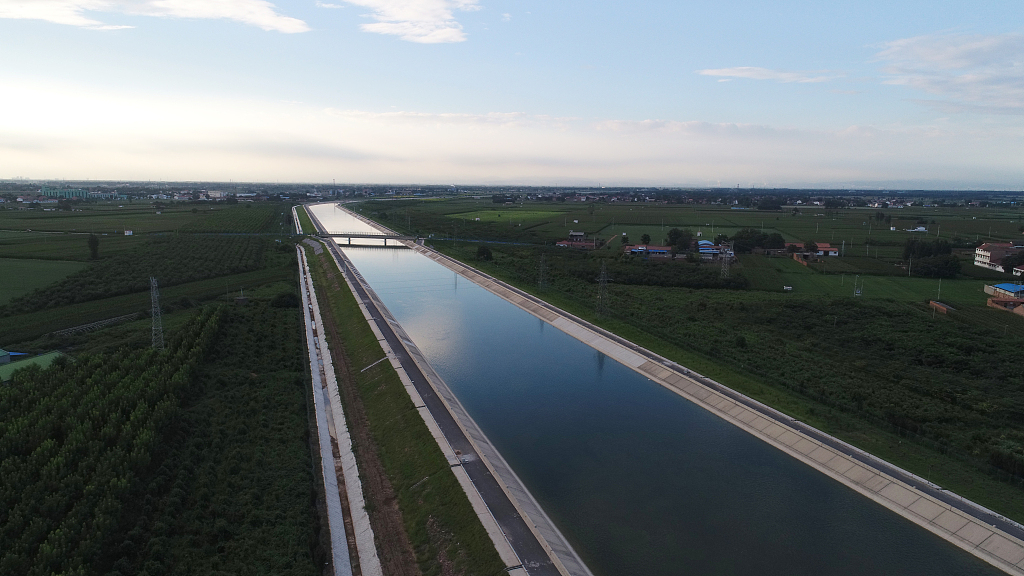China’s south-to-north water transfer project has benefited more than 100 million people in 40 northern cities since it was launched four years ago.

A view of part of the middle route of the south-to-north water transfer project in Jiaozuo, Henan Province, on Aug. 19, 2018. (Photo: VCG)
A total of 22.2 billion cubic meters of water has been delivered to North China through the east and middle routes of the project. The project has ensured water safety, protected water ecology, and reduced overexploitation of underground water.
The eastern route of the project, starting from Yangzhou in east China’s Jiangsu province, has diverted about 3.1 billion cubic meters of water to Shandong in east China, while the middle line has delivered 17.9 billion cubic meters of water to Beijing and Tianjin municipalities and the provinces of Hebei and Henan.
Shen Junzhen, who lives in Henan province, said he used to fetch water from a well far from home, but his city is now provided with water diverted through the middle route of the water project.
In Beijing, residents benefit from the water diversion, which provides 73 percent of the daily supply to the city's urban areas. In Tianjin, all residents drink water provided by the project. In Henan, water from southern China is available in 37 cities and counties. In Hebei, the water diversion provides over 75 percent of daily supply in the city’s urban areas in four cities--Shijiangzhuang, Handan, Baoding and Hengshui.
The water project has provided 370 million cubic meters of water for three major rivers in Hebei Province, according to Yu Qingtao, deputy director of the flood control and drought relief office of the province.
Thanks to the project, water levels began to rise in some drying rivers in North China, said Yuan Qitian, deputy of the Department of South-to-North Water Diversion Project Management with the Ministry of Water Resources.
Specifically, the phase-I project of the middle route has channeled 865 million cubic meters of water from Danjiangkou Reservoir to the 30 rivers in Beijing, Tianjin, Hebei and Henan.
The water project has reduced the exploitation of 1.523 billion cubic meters of underground water in 6 provinces and cities, including Beijing and Tianjin, said Han Liming, deputy head for the control center of the management bureau of the middle route of the south-to-north water diversion project.
The water supplement has increased the water volume of rivers and lakes, improved their self-purification capability, and improved water quality.
To ensure water quality, the en-route provinces such as Shandong and Jiangsu rolled out plans to curb water pollution. Shandong reduced the number of paper factories from more than 700 to a little more than 10 and Jiangsu shut down about 800 chemical enterprises.
About 426 pollution control projects have been set up in the eastern route of the project. The coverage of water reaching Grade I, the best in China's water quality grading system, rose from 30 percent between 2015 and 2016, to 80 percent between 2017 and 2018 in the middle line of the project.
(Compiled by Li Yan)


